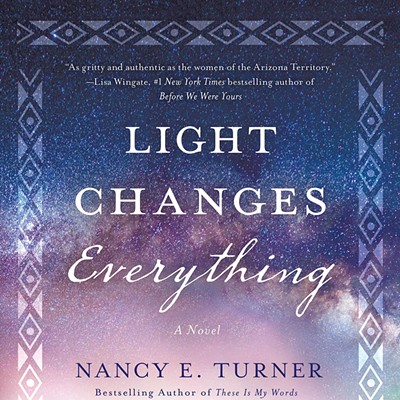Suburbia sucks. Just ask any self-respecting "outsider" artist. From highbrow literature (An American Tragedy) to schlocky potboilers (Peyton Place) and contemporary classics (The Ice Storm), the suburbs have long provided ample stomping ground for artistic outrage. With all its connotations of comfort, conformity and complacency, suburbia has proven to be a constant (and lucrative) thorn in the side of angry artists intent on subverting our collective fantasy of the American Dream.
And few contemporary artists have mined such a long and lucrative career knocking over white picket fences and headbutting happy housewives as playwright/actor, and now novelist, Eric Bogosian. After rattling teeth and winning awards for cynically nasty plays like Talk Radio and solo performance pieces such as Pounding Nails in the Floor with My Forehead, Bogosian has finally produced his first novel, Mall, and effectively channeled his abrasive brand of social satire into a new medium.
The action gets off to a typically Bogosian beginning as Mal, a 30-something speed freak, shoots his mother, sets fire to his split-level tract home and heads off to the local shopping mall with a sack full of weapons and an appetite for destruction. As if this weren't enough, Bogosian decides to tempt sick humor overkill by having Mal's mother, after being fatally shot, vainly attempt to rearrange a fallen plate of fish sticks as she crawls through pools of her own blood. Serves her right for moving to the suburbs.
Once the narrative has been thrown into motion, a gaggle of suburbanites descends upon the aforementioned shopping mall, ready for an invigorating evening of conspicuous consumption, oblivious to the bloodbath awaiting them. There's Danny, a voyeuristic businessman who gets his kicks by peeking into dressing rooms at J.C. Penney; Jeff, an existential teenager trying to find the meaning of life while cruising the food court; Donna, an unhappy housewife with an eating disorder and a penchant for one-night stands; and Michel, a Haitian immigrant/mall security officer seeking spiritual redemption.
Swirling around these characters is a supporting cast of teenage wastoids, disgruntled mall employees and apathetic cops, all lined up like lambs to the slaughter as irrational death in the form of a hopped-up junkie descends upon the brightly lit Xanadu of consumer pleasure and possibility. Using a Robert Altman-esque structure of overlapping and interwoven character interactions, Bogosian has his large cast of middle-American headcases mingle and collide with one another in a series of increasingly disturbing tableaus as they hurtle toward their respective fates.
In the sterile, Muzak-filled Thunderdome of the suburban shopping mall, Bogosian has found his architectural muse--the perfectly Stepford-like setting in which to stage a brutal dissection of one of his favorite themes: the American desire to define, achieve and propagate normality. While all the characters, in some way or another, wrestle with the stifling expectations of their banal lives, it is Jeff, the philosophically-inclined teenager, who becomes the moral center of the story and eventually the flipside reflection of Mal's psycho-angst, albeit in a far-from-heroic manner. This is a young man, after all, who drops acid, laughs at dead bodies, sleeps with a married woman and rails against conformity while falling into the Gap every weekend sporting Teva sports sandals and a carefully constructed "rebel" image. In Bogosianville, the distance between heroes and villains is measured solely by the severity of their crimes.
Mall amply displays Bogosian's strongest traits as a writer: his ability to vivdily etch characters whose emotional desperation makes them simultaneously sympathetic and repulsive, the knack for spinning satire out of everyday horror, and a deftness for morphing pop culture riffing into a philosophical treatise.
On the down side, Bogosian's narrative often meanders and digresses when it should accelerate (a premature climax arrives too early and with great force, only to dribble away over the duration of the story). It also revels in the somewhat reactionary misanthropy that has always made his work a "love it or hate it" proposition. Stuffing Mall with an almost overwhelming sense of bleakness aimed at his middle-class characters, Bogosian occasionally gives off the aroma of a condescending hipster, his view of the suburban heartland tainted by a native New York artist's disdain for anything west of Greenwich Village.
While Mall does ultimately allow a (somewhat) redemptive ending for at least some of its tortured shoppers, it is far from uplifting, indicating that while Bogosian may be getting older, he's not getting any happier. He still prefers to serve his cynicism straight up with no chaser, and in an American landscape increasingly clotted with pre-fab ideals of individualism, a little brutal smack talk aimed at our cookie-cutter mall culture may not be such a bad thing after all.
Suburbanites beware.








